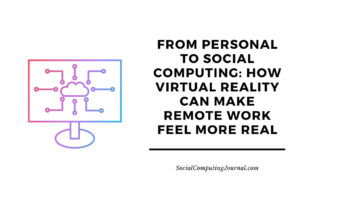What are the principles of Human Computer Interaction? HCI principles are a set of guidelines that can be used to design user interfaces that are easy to learn and use, efficient, and effective.
Some of the key principles of HCI include:
- Visibility of system status: Users should always be aware of what the system is doing, through appropriate feedback within a reasonable time.
- Match between system and the real world: The system should speak the user’s language, with words, phrases and concepts familiar to the user, rather than system-oriented terms. Follow real-world conventions, making information appear in a natural and logical order.
- User control and freedom: Users often choose system functions by mistake and will need a clearly marked “emergency exit” to leave the unwanted state without having to go through an extended dialogue. Support undo and redo.
- Consistency and standards: Users should not have to wonder whether different words, situations, or actions mean the same thing. Follow platform conventions.
- Error prevention: Even better than good error messages is a careful design which prevents a problem from occurring in the first place. Either eliminate error-prone conditions or check for them and present users with a confirmation option before they commit to the action.
- Recognition rather than recall: Minimize the user’s memory load by making objects, actions, and options visible. The user should not have to remember information from one part of the dialogue to another. Instructions for use of the system should be visible or easily retrievable whenever appropriate.
- Flexibility and efficiency of use: Accelerators — unseen by the novice user — may often speed up the interaction for the expert user such that the system can cater to both inexperienced and experienced users. Allow users to tailor frequent actions.
- Aesthetic and minimalist design: Dialogues should not contain information which is irrelevant or rarely needed. Every extra unit of information in a dialogue competes with the relevant units and diminishes their relative visibility.
- Help users recognize, diagnose, and recover from errors: Error messages should be expressed in plain language (no codes), precisely indicate the problem, and constructively suggest a solution.
- Help and documentation: Even though it is better if the system can be used without documentation, it may be necessary to provide help and documentation. Any such information should be easy to search, focused on the user’s task, list concrete steps to be carried out, and not be too large.
By following these principles, HCI designers can create user interfaces that are more efficient, effective, and enjoyable to use.
HCI Principles in Practice
Here are some examples of how HCI principles can be applied in practice:
- Visibility of system status: A web browser might display a loading spinner to indicate that it is loading a page.
- Match between system and the real world: A software application might use a trash can icon to indicate that a file can be deleted.
- User control and freedom: A user might be able to press the “Escape” key to exit a menu.
- Consistency and standards: All of the buttons in a software application might use the same color and design.
- Error prevention: A web browser might warn the user before they close a tab with unsaved changes.
- Recognition rather than recall: A software application might display a list of recently opened files to the user.
- Flexibility and efficiency of use: A software application might allow the user to create keyboard shortcuts for their favorite commands.
- Aesthetic and minimalist design: A web browser might only display the buttons and menus that are relevant to the current task.
- Help users recognize, diagnose, and recover from errors: A software application might display a helpful message if the user enters an invalid password.
- Help and documentation: A software application might provide a user manual or online help system.
HCI principles are an important part of designing user interfaces that are easy to use and effective. By following these principles, designers can create systems that benefit everyone, from individuals to businesses to society as a whole.







